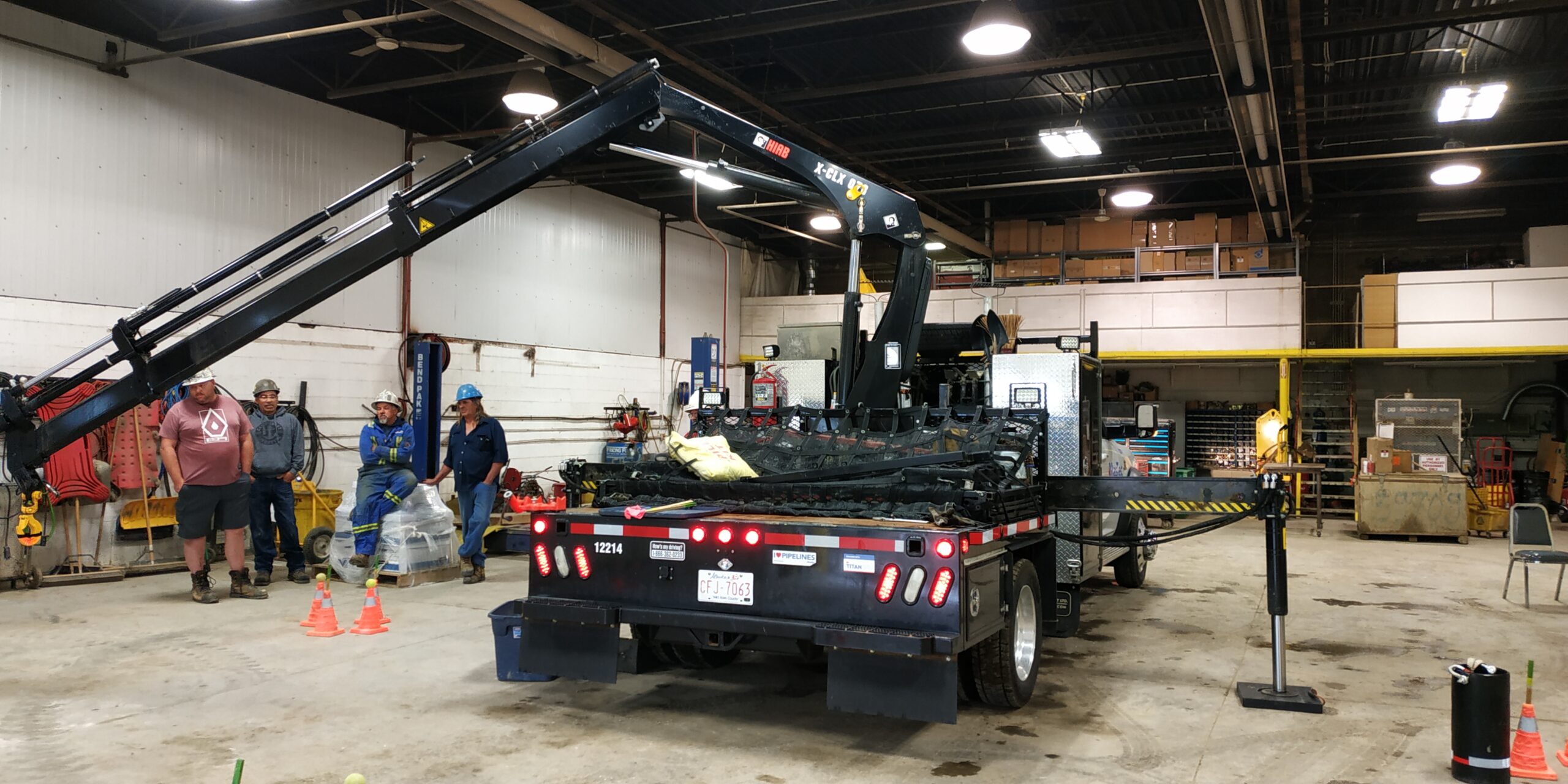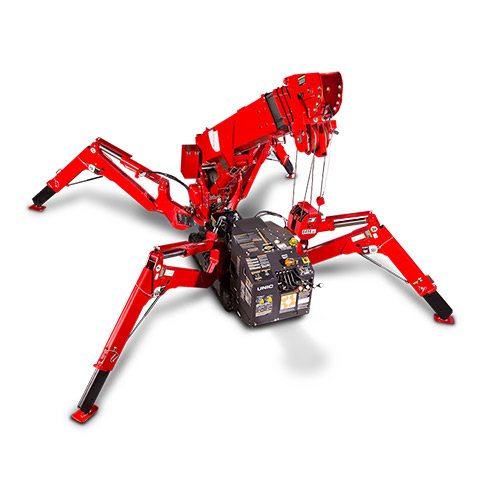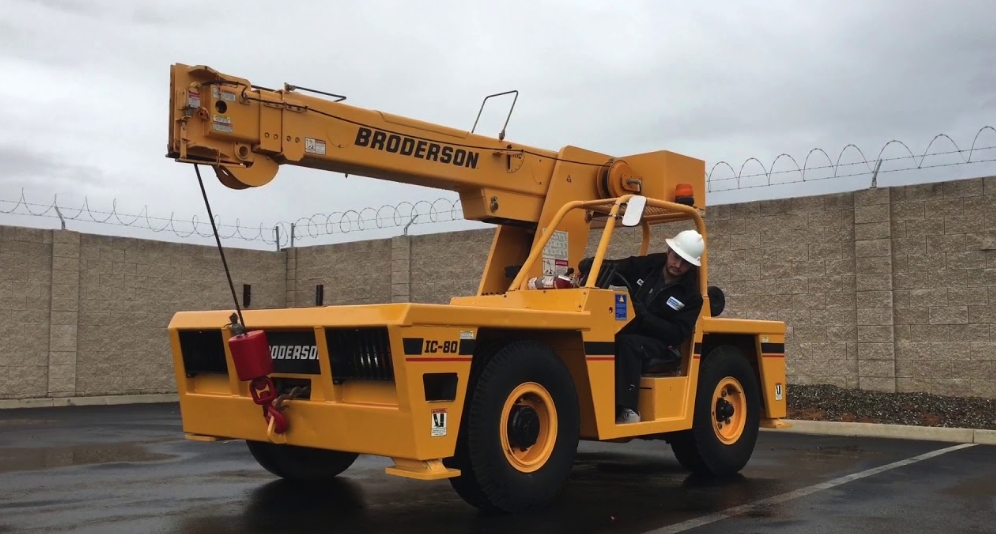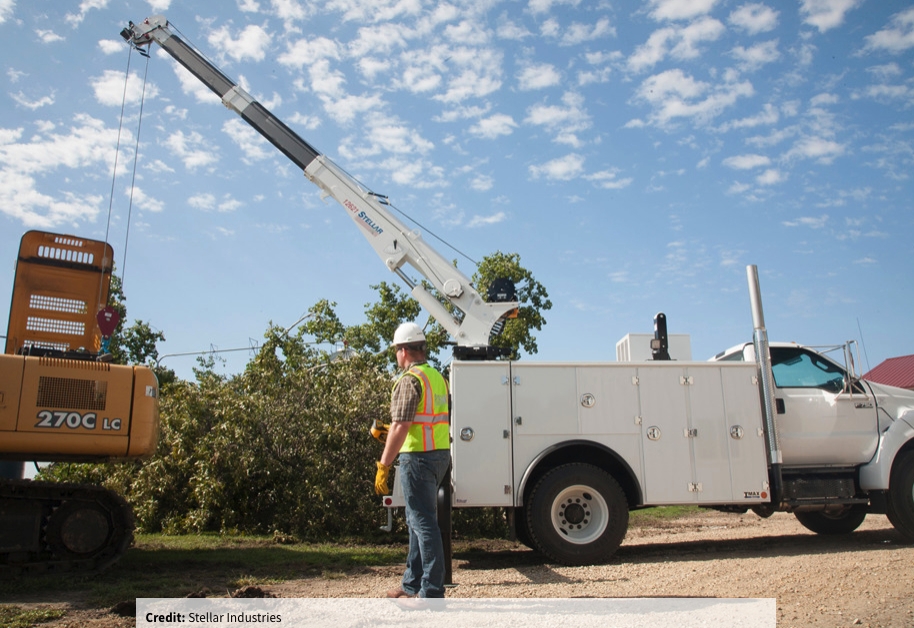What are The Saskatchewan Light Duty Knuckle Boom Picker Training Requirements?
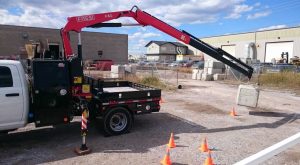 *ALL cranes in Saskatchewan with a lift capacity of LESS than 5.-tons INITIAL lift capacity or the first weight on the load chart on the left side shown.
*ALL cranes in Saskatchewan with a lift capacity of LESS than 5.-tons INITIAL lift capacity or the first weight on the load chart on the left side shown.*Always confirm the standards with your local OHS office.
Designated operator
204
(1) In this section:
(a) “competent operator” means a worker who has successfully completed a training program that includes all of the elements set out in Table 16 of the Appendix for the crane that the worker will be required or permitted to operate or is completing the practical training required by Part II of Table 16 under the direct supervision of a competent operator or a qualified operator;
(b) “qualified operator” means:
(i) the holder of a journeyman’s certificate in the crane and hoist operator trade issued pursuant to The Apprenticeship and Trade
Certification Act;
(ii) the holder of a proficiency certificate in a subtrade of the crane and hoist operator trade issued pursuant to The Apprenticeship and Trade
Certification Act;
(iii) an apprentice in the crane and hoist operator trade who is working under the direction of a person described in subclause (i) or (ii); or
(iv) any other worker who:
(A) has received training, and has experience, in the safe operation of a crane that, in the opinion of the director, is equivalent to or
superior to the training and experience of a person mentioned in subclause (i), (ii) or (iii); or
(B) is a member of a category of workers whose training and experience in the safe operation of a crane, in the opinion of the
director, is equivalent to or superior to the training and experience of a person mentioned in subclause (i), (ii) or (iii).
(2) Subject to subsections (3), (4) and (5), an employer or contractor shall:
(a) designate a worker to operate a hoist, crane or lifting device;
(b) ensure that the designated operator is trained in the operation of that hoist, crane or lifting device; and
(c) ensure that no worker operates a hoist, crane or lifting device other than a designated operator.
(3) Subject to subsection (4), on and after July 1, 1997, an employer or contractor shall ensure that the designated operator is a qualified operator where the crane to be operated is:
(a) a tower crane;
(b) an overhead travelling crane that has a load rating equal to or greater than 50 tonnes;
(c) a crane that is used to raise or lower a worker on a personnel-lifting unit suspended from a hoist line; or
(d) a mobile crane that has a load rating greater than five tonnes.
(4) Subsection (3) does not apply to a crane that is:
(a) mounted on a vehicle and used exclusively to load or unload that vehicle; or
(b) owned by an employer, operated by a worker in the service of that employer and used solely at that employer’s place of employment to perform work exclusively for that employer.
(5) On and after July 1, 1997, in any circumstances other than those described in subsection (3), an employer or contractor shall ensure that:
(a) for any crane with a load rating greater than or equal to five tonnes, the designated operator is a competent operator; and
(b) for any mobile or overhead travelling crane with a load rating less than five tonnes, the designated operator is a competent worker.
(6) No worker shall operate a hoist, crane or lifting device unless the worker is a designated operator and has been trained in the operation of that hoist, crane or lifting device.
(7) No worker shall operate a crane unless the worker:
(a) has written proof of training in the operation of any crane that the worker will be required or permitted to operate; and
(b) has that written proof of training readily accessible at all times while the worker is operating the crane.
Minimum Training Requirements for Competent Operator of a Crane (Table 16)
Course Content:
A Occupational Health and Safety Regulations, 1996 Related to Cranes:
- Duties of employers and operators
- Protection of workers
- Approved standards for cranes
- Operation of cranes
- Maintenance of cranes
- Signaling
B Types of Cranes:
- Terminology
- Types of cranes
- Specific design of crane to be operated
- Basic geometry of cranes, including effect of configuration changes and operating in different quadrants
C Site Evaluation:
- Check route of travel, clearances and ground conditions, including the presence
- of structures, power lines or other equipment that may constitute a hazard
- Check site of operation, including the nature of ground, gradients, stabilizers,
- tire pressure and blocking under outriggers
- Identify potentially dangerous situations and the appropriate response
D Crane Controls:
- Identify and use controls
- Pre-start check
- Start-up
- Shut-down
- Post-operating check
- Perform operating adjustments
E Operation of Crane:
- Movement to location
- Set-up; extend stabilizers and outriggers
- Change configuration; insert boom sections; extensions; jibs; counterweights
- Check for safety of other persons before movement
- Safety precautions while crane is unattended, in storage or in transit
- F Load Estimation
- Load gauge incorporated in the crane
- Calculation of load from material density and volume
- Incorporate weight of attachments, hook, block and headache ball
G Establish Capability of Crane:
- Implications of moments, leverage and mechanical advantage on capability
- Use of load charts to determine capability
- Effect of boom length, angle and load radius
- Effect of configuration changes, boom extension and jib
- Centre of gravity
- Abnormal loading; wind velocity
- Multi-crane hoists
H Rigging:
- Inspection of ropes and rigging equipment
- Reeving: sheaves; spools; drums; wire ropes
- Rigging loads: hooks; safety catches; shackles; end fittings and connections
- Rigging slings: configurations; angles; safe working loads
- Safety factors for loads and workers
I Signaling:
- Designated signaler: position; visibility; number
- Methods of signaling: hand; radio
- Standard hand signals
J Maintenance of Crane:
- Maintenance schedule; planned preventative maintenance
- Inspection and repair procedures
- Blocking and the safe position of parts during maintenance
- Wire rope inspection and maintenance
K Log Books:
- Record inspections, maintenance, calibrations and work activities
- Hours of service
- Signed by employer and person performing inspection, maintenance and calibration
II Course Duration:
A Overhead travelling crane or hoist: 40 hours, classroom and practical.
B Tower or mobile crane: 100 hours, classroom and practical.
C Crane used to raise or lower a worker in a personnel-lifting unit on a hoist line: 20 hours of classroom and 200 hours of practical experience operating the crane in addition to the requirements set out in items A and B.


